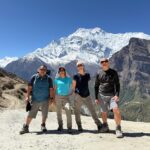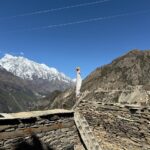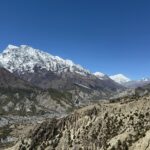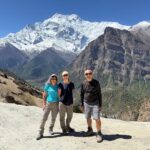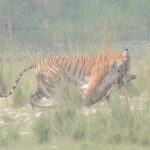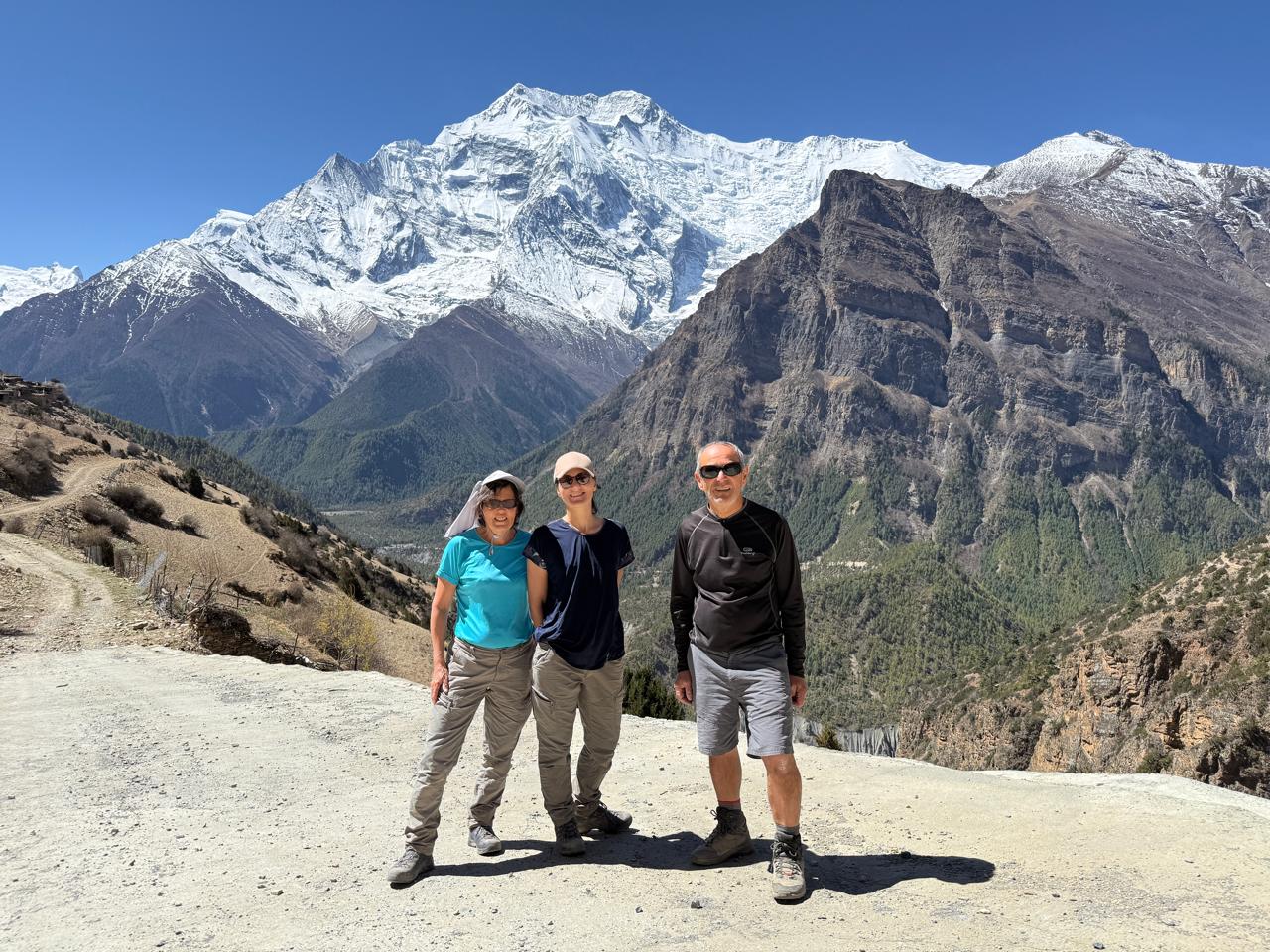
Annapurna Circuit Trek: The Ultimate Guide for First-Time Trekkers
If you dream of walking among the world’s highest mountains, immersing yourself in vibrant local culture, and pushing your limits in a once-in-a-lifetime adventure, the Annapurna Circuit Trek is calling your name.
Often described as one of the best long-distance treks on Earth, this journey circles the stunning Annapurna Massif and takes you through lush forests, barren highlands, remote villages, and over the thrilling Thorong La Pass.
This Annapurna Circuit Trek ultimate guide will help first-time trekkers prepare everything they need to know — from preparation and gear to permits, altitude tips, and the best seasons for trekking.
Why Choose the Annapurna Circuit Trek?
The Annapurna Circuit Trek offers a mesmerizing combination of breathtaking landscapes, diverse ecosystems, and rich cultural experiences.
Over 160–230 kilometers (depending on where you start and finish), you’ll witness:
-
Towering peaks like Annapurna I (8,091m), Dhaulagiri, and Machapuchare
-
Deep river gorges, terraced fields, and ancient monasteries
-
Distinct ethnic groups such as the Gurung, Thakali, and Manangi people
-
High-altitude deserts resembling Tibetan landscapes
Unlike some treks that focus purely on scenery, the Annapurna Circuit blends natural beauty with living cultural traditions, making it ideal for both adventurers and cultural explorers.
How to Prepare for the Annapurna Circuit Trek
Physical Preparation
Although the Annapurna Circuit is accessible for many fitness levels, good preparation ensures you enjoy every step.
Here’s how to get ready:
-
Cardiovascular Fitness: Start hiking, cycling, or running regularly 2–3 months before your trek.
-
Strength Training: Build endurance in your legs and core with squats, lunges, and core exercises.
-
Altitude Acclimatization: If possible, do some hikes at higher elevations before arriving in Nepal.
Remember, trekking at altitude is less about speed and more about stamina. Walk at a steady, comfortable pace, and allow time for your body to adapt.
Essential Gear for First-Time Trekkers
Packing smartly can make or break your trekking in Nepal experience.
Here’s a basic checklist for the Annapurna Circuit Trek:
Clothing
-
Moisture-wicking base layers
-
Fleece jacket
-
Down jacket (lightweight but warm)
-
Waterproof jacket and pants
-
Trekking pants and quick-dry shirts
-
Warm hat, sun hat, gloves
Footwear
-
Well-broken-in waterproof trekking boots
-
Comfortable camp shoes or sandals
-
Wool trekking socks (3–4 pairs)
Sleeping Gear
-
Four-season sleeping bag (rated to -10°C or lower)
Accessories
-
Trekking poles
-
Sunglasses (UV protection)
-
Headlamp with spare batteries
-
Reusable water bottles (2 liters total capacity)
-
Water purification tablets or filter
-
First-aid kit (include blister care and altitude medication like Diamox)
-
Personal toiletries
Most gear is available for rent or purchase in Kathmandu or Pokhara, but it’s better to bring personal essentials, especially high-quality boots and a sleeping bag.
Permits You Need for the Annapurna Circuit Trek
Before setting out, first-time trekkers must secure two key permits:
-
TIMS Card (Trekkers’ Information Management System)
-
Cost: About USD 20 for individual trekkers or USD 10 if you are part of an organized group.
-
-
ACAP Permit (Annapurna Conservation Area Project Permit)
-
Cost: Around USD 30.
-
You can easily obtain these permits in Kathmandu or Pokhara. If you book through a trekking agency, they usually arrange permits for you.
Tip: Carry multiple passport-sized photos and a photocopy of your passport when applying.
Dealing with Altitude on the Annapurna Circuit
The Annapurna Circuit Trek climbs to altitudes as high as 5,416 meters (Thorong La Pass), meaning altitude sickness is a serious consideration.
Tips to Avoid Altitude Sickness:
-
Ascend Slowly: Allow at least 10–12 days for acclimatization.
-
Stay Hydrated: Drink 3–4 liters of water daily.
-
Listen to Your Body: If you feel dizzy, nauseous, or extremely fatigued, descend immediately.
-
Take Rest Days: Spend extra nights in places like Manang to acclimate properly.
-
Consider Medication: Many trekkers use Diamox to aid acclimatization (consult your doctor).
Remember: Altitude sickness can affect anyone, regardless of fitness level, so respect the mountains and your body’s signals.
Best Time to Trek the Annapurna Circuit
Choosing the right season is crucial for your success and enjoyment.
Spring (March–May)
-
Rhododendron forests bloom spectacularly.
-
Clear skies and pleasant daytime temperatures.
-
High season — expect more trekkers.
Autumn (September–November)
-
The most popular season.
-
Post-monsoon clarity gives stunning mountain views.
-
Mild days and cool nights.
Winter (December–February)
-
Cold and snowy, especially near Thorong La.
-
Possible trail closures due to snow.
-
Very few trekkers — serene but challenging.
Monsoon (June–August)
-
Heavy rains cause slippery trails and landslides.
-
Lower visibility but the landscapes are lush and green.
Best Recommendation: For first-time trekkers, autumn and spring are the ideal seasons.
Annapurna Circuit Trek Highlights You Can’t Miss
Even for first-time trekkers, these spots are unforgettable:
-
Thorong La Pass (5,416m): The ultimate achievement of the trek.
-
Manang Village: A beautiful acclimatization spot surrounded by peaks.
-
Muktinath Temple: Sacred for both Hindus and Buddhists.
-
Marpha Village: Famous for its apple orchards and local brandy.
-
Tatopani Hot Springs: A well-deserved soak after days of trekking.
Guided Tour vs. Independent Trekking
Both options are popular, but first-time trekkers may benefit from a guided trek.
Guides help with navigation, accommodation, communication, and emergencies, leaving you to focus purely on the experience.
Porters can also be hired to carry heavy loads, allowing you to trek comfortably with just a daypack.
Pro Tip: Hiring local guides and porters supports the local economy and enriches your cultural interaction.
Final Thoughts: Your Adventure Starts Now!
The Annapurna Circuit Trek promises not only spectacular scenery but a true journey of self-discovery.
With the right preparation, gear, permits, and respect for the mountains, first-time trekkers can have a life-changing adventure in Nepal’s Himalayan heartland.
So lace up your boots, pack your sense of wonder, and get ready for an unforgettable trekking experience around Annapurna!


